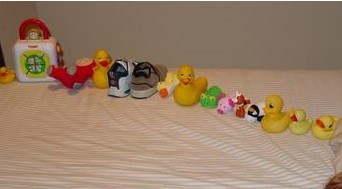Autism Hope: Therapy Reverses Behaviours in Mice

Autism-like behaviours in mice have been reversed by scientists, suggesting one day treatments may be available for autism spectrum disorders (ASDs) in humans.
Scientists at McGill University and the University of Montreal, Canada, have discovered a crucial link between protein synthesis and ASD that could lead to new therapies.
Protein synthesis, which is sometimes called mRNA translation, is the process of cells making proteins. It is involved in all aspects of cell and organism function.
The study found that mice which had abnormally high synthesis of neuroligins - a group of neuronal proteins - had symptoms similar to those seen in people with ASD.
About 588,000 people in the UK have ASD, an umbrella term that includes autism and Asperger syndrome. It is a complex developmental disability that involves a biological or organic defect in the brain.
Autism is a disabling and lifelong condition that can have devastating effects on individuals. It is incurable but the right support can make life easier for people with ASD.
However, two-thirds of adults with autism do not have enough support to meet their needs and one in three experience severe mental health difficulties because of a lack of support.
ASD affects three areas of behaviour: social interaction, communication and repetitive behaviours or interests, for example arranging toys in a specific way.
The Canadian Researchers found that autism-like behaviours could be rectified by compounds inhibiting protein synthesis or gene therapy that targets neuroligins.
Professor Nahum Sonenberg, from McGill University, said his laboratory looks at the role of protein synthesis in cancer and was surprised to find that similar mechanisms are involved in the development of ASD.
"We used a mouse model in which a key gene controlling initiation of protein synthesis was deleted," he said
"In these mice, production of neuroligins was increased. Neuroligins are important for the formation and regulation of connections known as synapses between neuronal cells in the brain, and essential for the maintenance of the balance in the transmission of information from neuron to neuron."
Christos Gkogkas, lead author of the study, explained neuroligins were first associated with ASD in 2003 but the mechanisms involved are still not understood. He said: "Our work is the first to link translational control of neuroligins with altered synaptic function and autism-like behaviors in mice.
"The key is that we achieved reversal of ASD-like symptoms in adult mice. Firstly, we used compounds, which were previously developed for cancer treatment, to reduce protein synthesis. Secondly, we used non-replicating viruses as vehicles to put a break on exaggerated synthesis of neuroligins."
Researchers found that the dysregulated synthesis of neuroligins change brain activity, which results in an imbalance.
Explaining how researchers then reversed the ASD-like behaviours, Professor Jean-Claude Lacille, from the University of Montreal, said: "The autistic behaviours in mice were prevented by selectively reducing the synthesis of one type of neuroligin and reversing the changes in synaptic excitation in cells.
"In short, we manipulated mechanisms in brain cells and observed how they influence the behaviour of the animal. The fact that the balance can be affected suggests that there could be a potential for pharmacological intervention by targeting these mechanisms."
Despite these encouraging findings, Caroline Hattersley, head of Information, Advice and Advocacy at The National Autistic Society, told IBTimes UK that the possibility for a human treatment is still a long way off.
"The findings of this study are interesting, but we would urge people to be cautious when considering their implications. Extrapolating the results from mice that exhibit autism-like behaviour to humans who actually have the disability is problematic.
"At this early stage, much more research is needed before we can come to any concrete conclusions about how this could help people with autism."
© Copyright IBTimes 2025. All rights reserved.





















